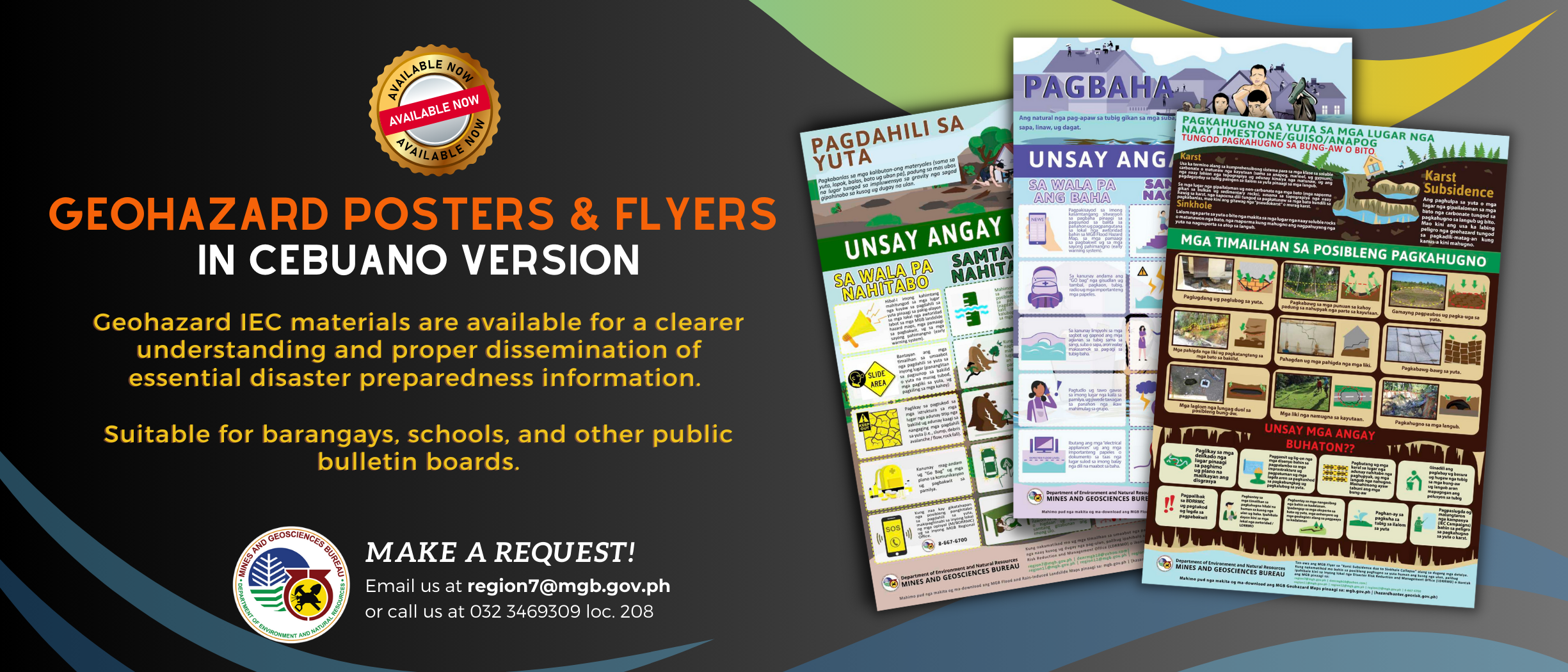Some 208 barangays in Yolanda-hit areas in the northern part of Cebu covering 8 towns and one city were assessed in a detailed geohazard mapping in a scale of 1:10,000.
Mines and Geosciences Bureau (MGB) 7 Regional Director Loreto B. Alburo said this is a priority program under President Aquino’s administration to ensure that lives and pieces of property are protected against the possibility of landslides and flooding given the adverse and extreme weather conditions in the country
“Yolanda has taught us a “new normal” when it comes to the intensity and magnitude of typhoons and storm surges that affect the coastal communities with overwhelming impacts,” said Alburo.
In a report released by the MGB 7’s geosciences division as of July 23, those towns which were covered included Madridejos with 14 barangays; Santa Fe, 10; Bantayan, 25; Daanbantayan, 20; Tabogon, 29, Borbon, 19; Tuburan, 54; Tabuelan, 12; and Bogo City with 29.
The assessment was conducted by the MGB 7 with the assistance from MGB region 3 to expedite the said activity.
“The objective of the 1:10,000-scale is to indicate more details of the area covered by the map which may include the specific physical characteristics or environment of each sitio or “purok” in a barangay,” said Department of Environment and Natural Resources (DENR) 7 Regional Executive Director Dr. Isabelo R. Montejo.
Montejo added the 1:10,000-scale geohazard map is expected to be completed in 2014 as it is a marching order by DENR Secretary Ramon JP Paje.
Alburo said the assessment team will re-issue the appropriate warnings and geohazards advisories to be received by the Office of the Mayor and a barangay official with information, education and communication campaign.
He added the assessment results which were given out to the local government units have mitigating measures to reduce possible impacts or effects of these geological hazards.
Alburo articulated that geohazard maps have become an important tool in disaster risk reduction and management and should always be revisited and used by the LGUs.
The Mortality Risk Index as indicated by the United Nations ranks the Philippines as 7th highest in the world with respect to tropical cyclones and earthquakes and 5th and 4th highest when it comes to landslides and flooding, respectively.
Meanwhile, the MGB 7 as of April 30, 2014 has acted or accomplished about 5,639 geological investigation reports or site assessments after the M7.2 earthquake in Bohol. The report stated core shelters with 5,159; schools, 185; relocation sites for housing and government institutions, 13; church sites, 5; government institutions to include barangay halls and hospitals, 48; roads, 24; and sinkholes assessment with 205.
It could be recalled that the October 15, 2013 M7.2 earthquake killed 222, at least 209 in Bohol. It damaged around P1.38 billion worth of projects, driving 71,822 families away from their homes and caused injuries in 976 persons.






